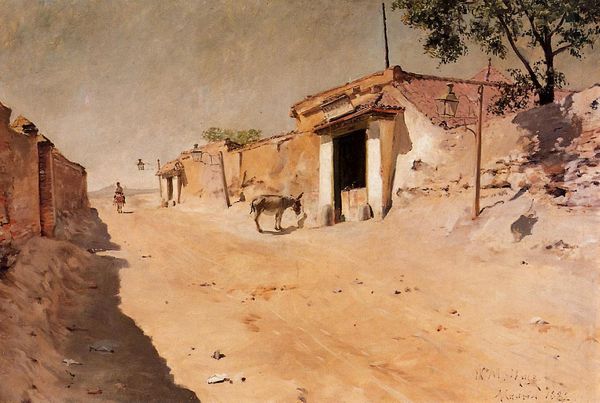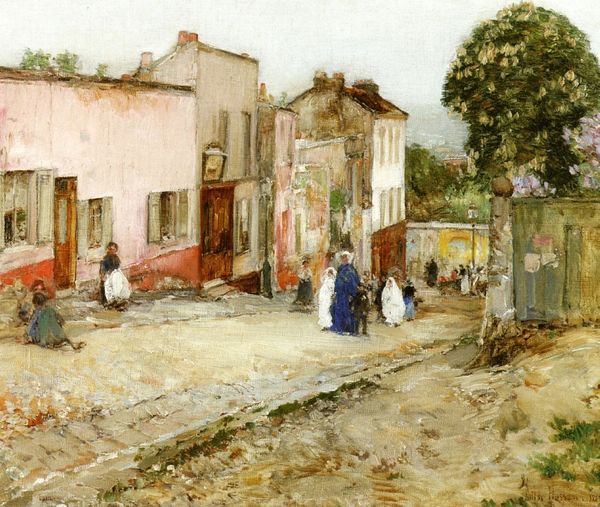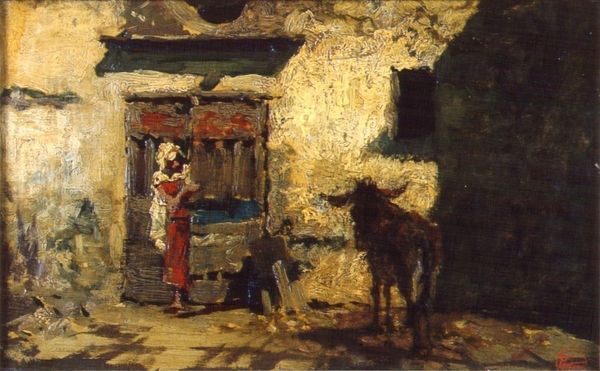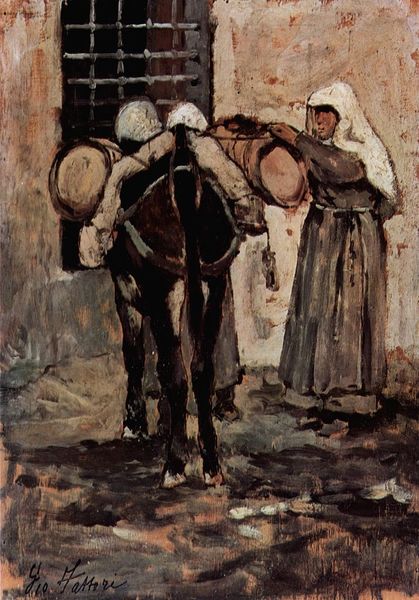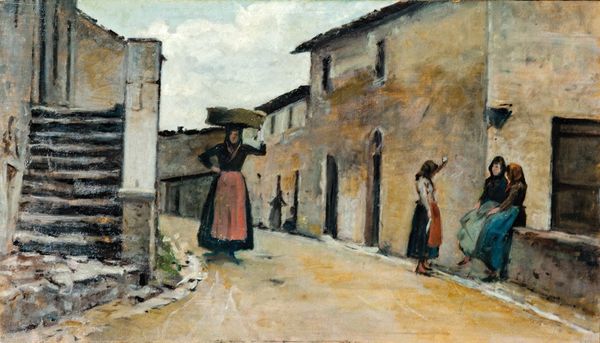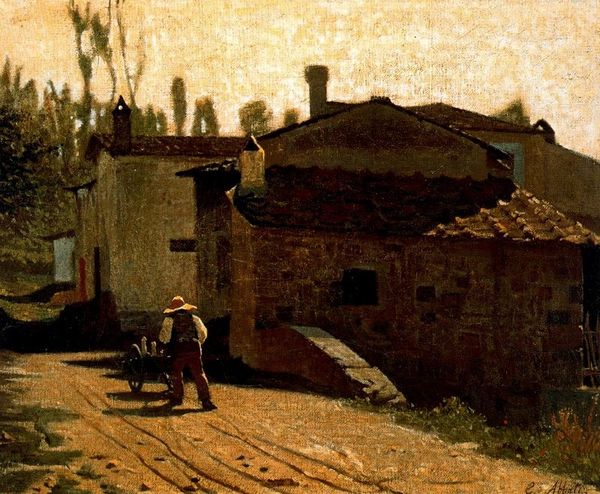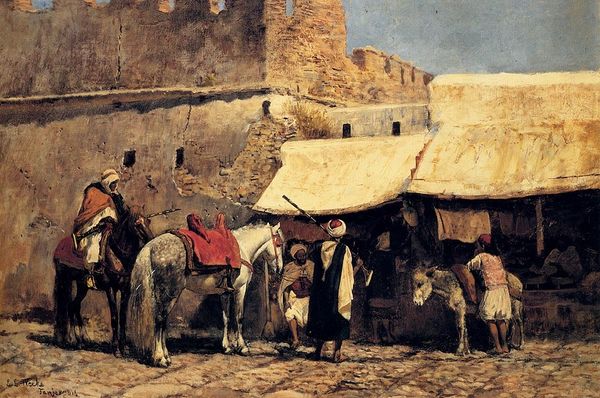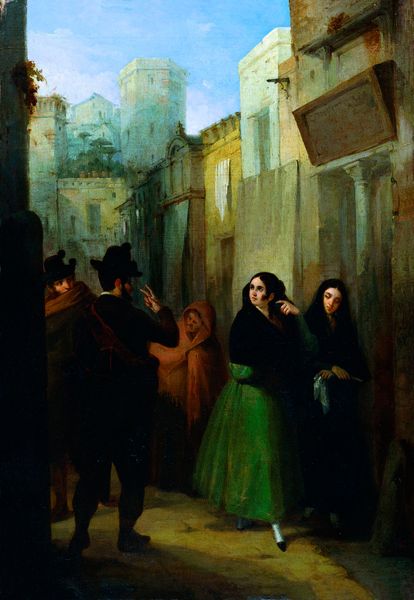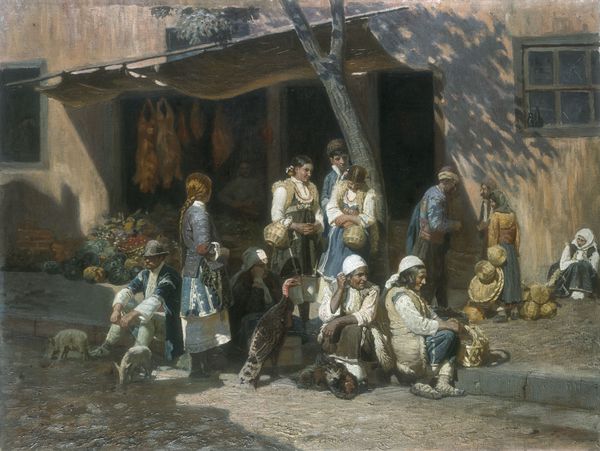
painting, oil-paint
#
painting
#
oil-paint
#
oil painting
#
symbolism
#
genre-painting
#
history-painting
#
academic-art
#
realism
Copyright: Public domain
Editor: This is Luc-Olivier Merson's 1897 oil painting, "The Arrival at Bethlehem". It's a compelling, almost gritty take on a familiar scene. The ground looks so hard, and you can almost feel the chill of the night. What stands out to you about it? Curator: The materials and the way they are used speak volumes. Observe how the oil paint, a common medium, is applied almost crudely to depict this supposedly sacred moment. It demystifies the narrative, bringing it down to earth, literally reflecting the ground where Mary kneels. Editor: That's interesting! It definitely doesn't feel idealized in the way some religious paintings do. Curator: Exactly! The brushstrokes are not about ethereal beauty but about the roughness of existence. The architecture is stark, emphasizing labor and a very unglamorous arrival. This wasn’t some grand procession, was it? It was a struggle. Consider the socio-economic conditions this implies. Editor: I see what you mean. Joseph’s gesture and even the woman looking out the window, seem to suggest a community that's not necessarily welcoming or even capable of helping. Curator: Precisely. The artist is pointing to the materiality of their circumstances - a rejection manifested through architecture and gesture and the cool, withholding palette - prompting a critique of the social and economic forces at play during the time. Where does divine intervention fit into all of this? Editor: It feels like the focus shifts from the purely religious to something more grounded in human experience. I like how that complicates my understanding. Curator: It challenges the traditional veneration, doesn't it? This examination pushes the boundary of what sacred art is meant to convey through process, the means of production, labor. Editor: I hadn’t considered the materials themselves contributing to the narrative so directly. It’s given me a totally new way of seeing this. Curator: Indeed. Materiality matters. It exposes the unseen and the unspoken.
Comments
No comments
Be the first to comment and join the conversation on the ultimate creative platform.
